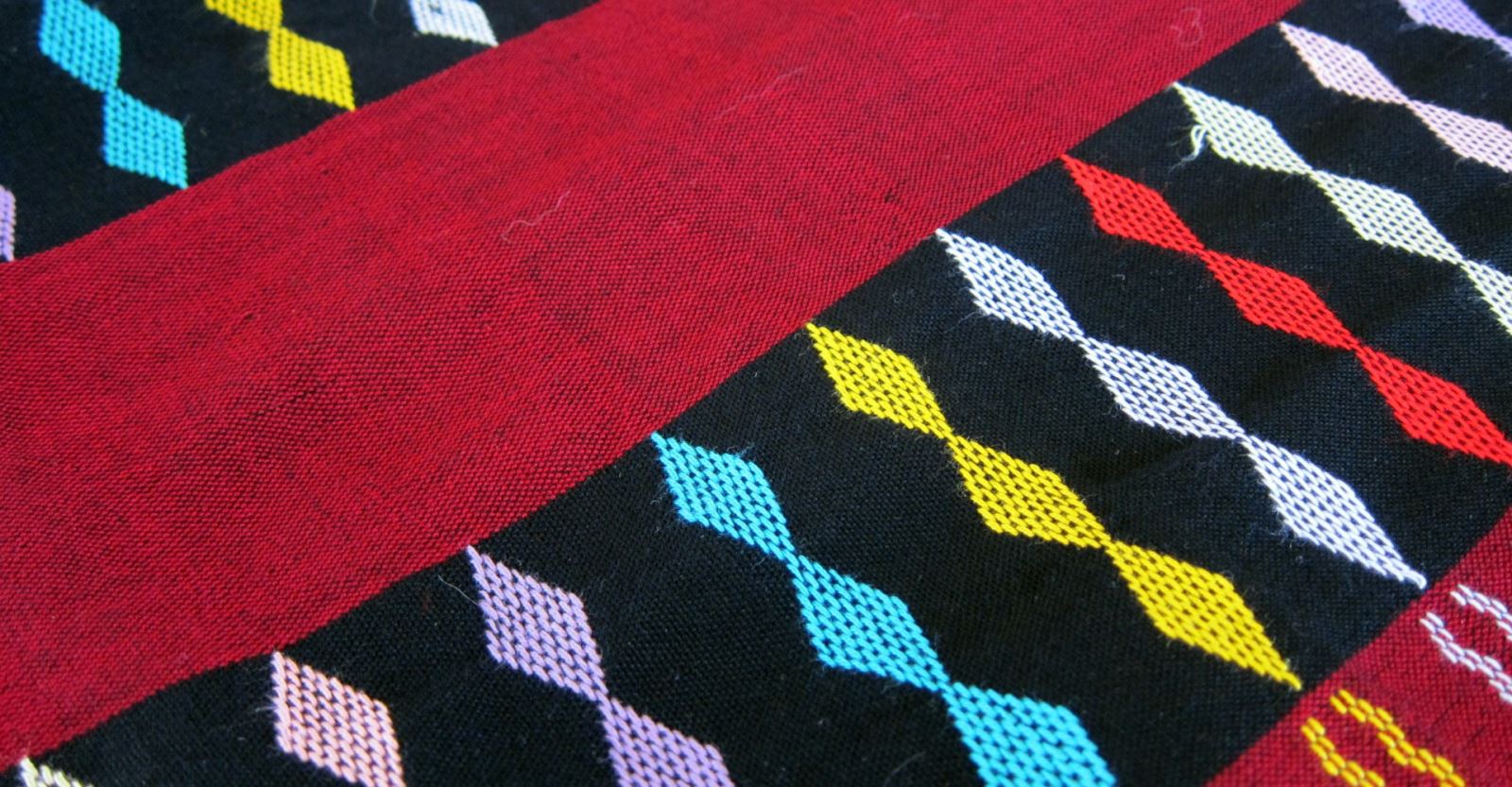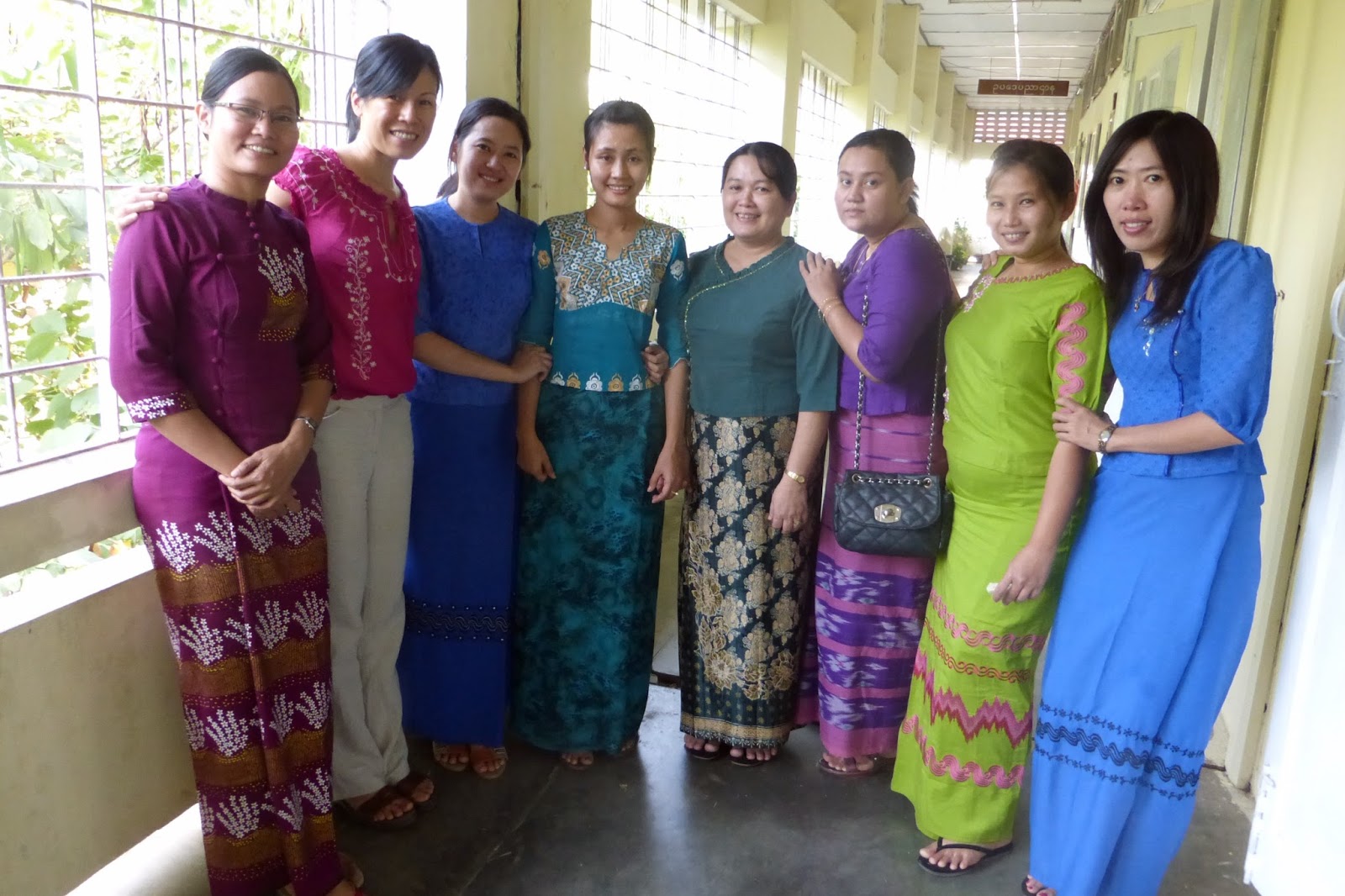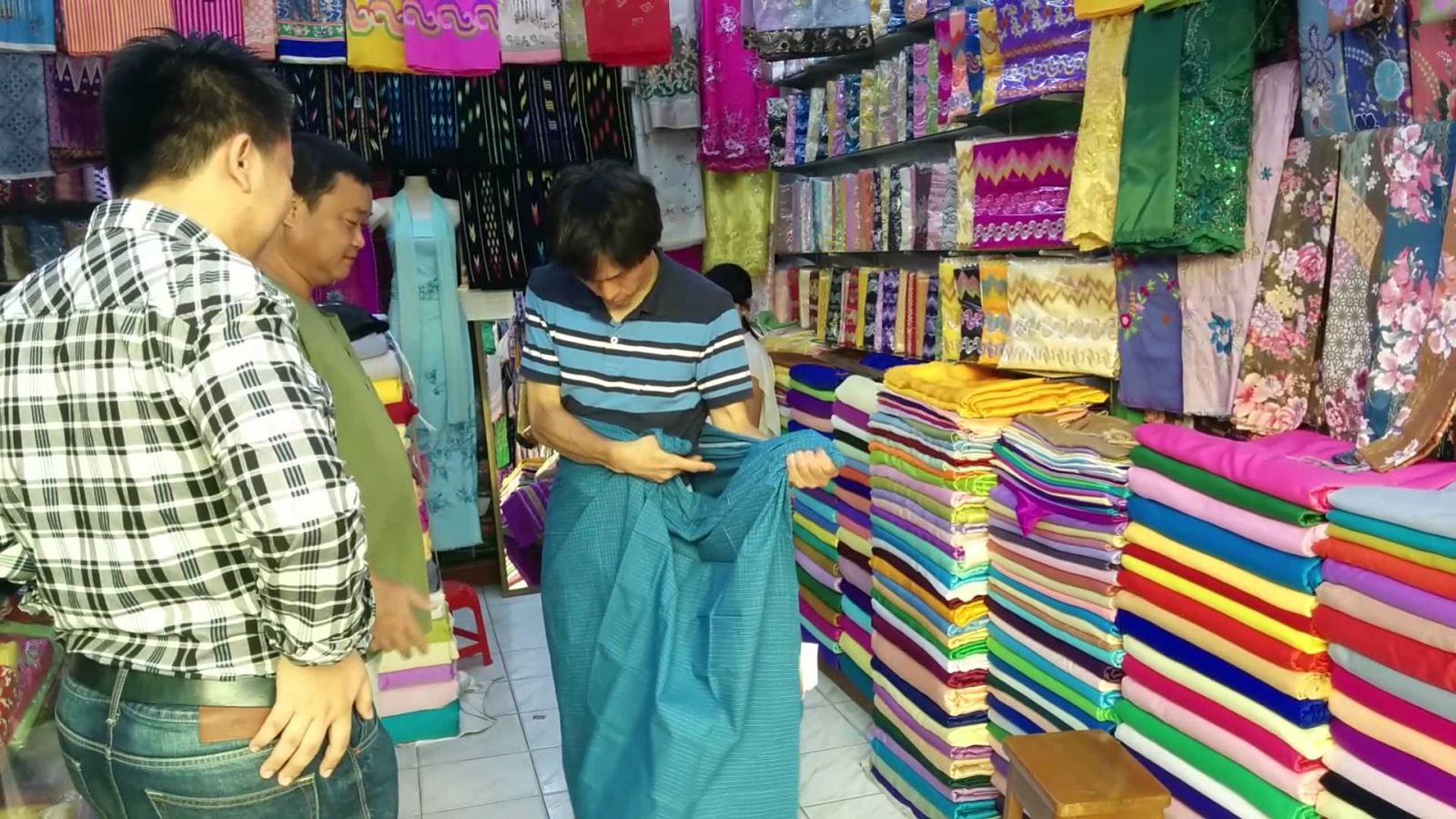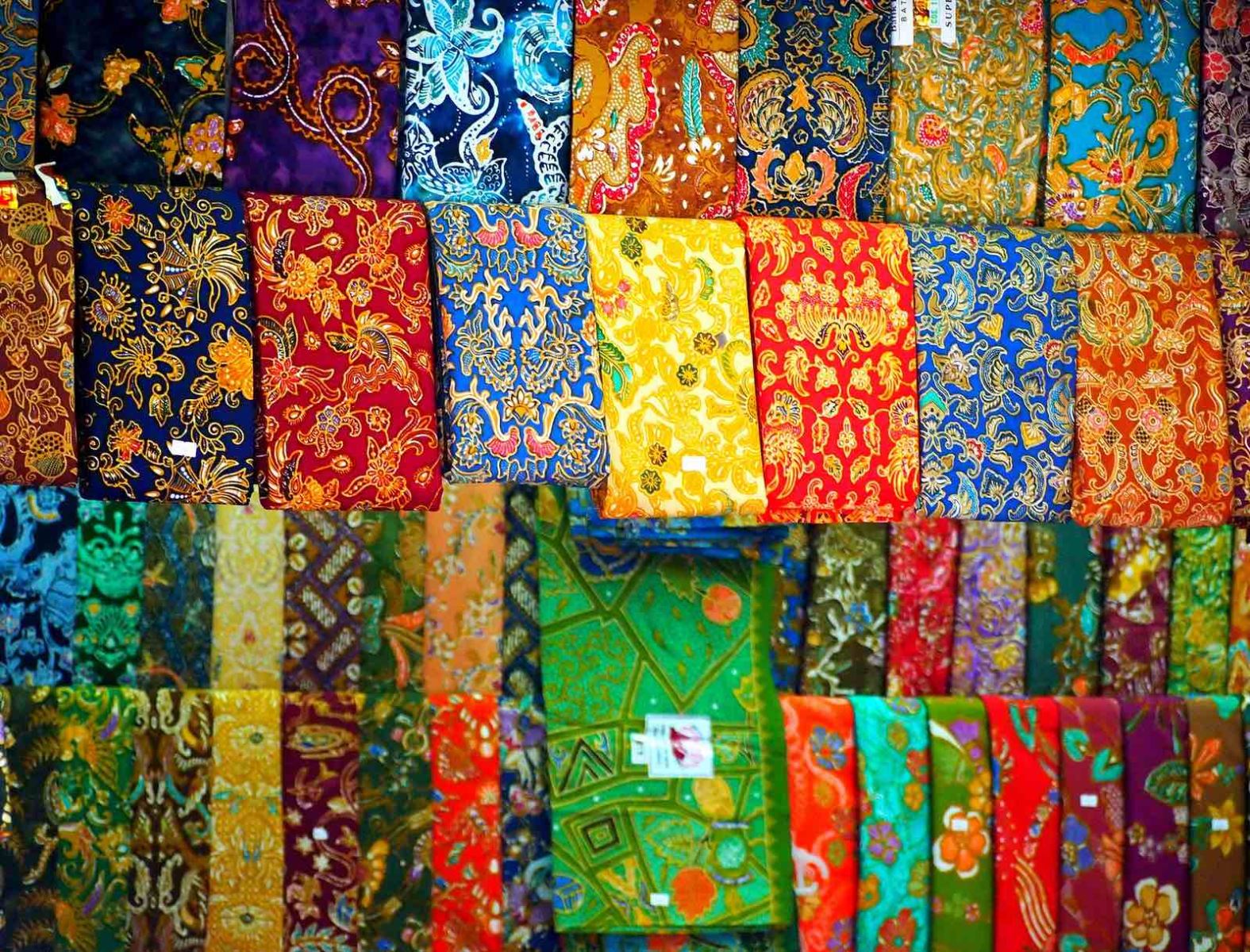Given its ubiquity today, it might surprise you to learn that the longyi only really became popular in Burma during the British colonial period, influenced by the social and sartorial customs of nearby India and Malaysia. Before this time, Burmese men more commonly wore a different skirt-like garment called “taungshay paso”, while the women wore a “htamein”.

Though not so different from the longyi at first glance, these older styles were rather more elaborate – the taungshay paso could consist of over nine metres of fabric, while the htamein often incorporated several different types of fabric and a train that brushed along the ground. The longyi, by comparison, is usually just two metres long and it much more convenient to wear! Perhaps it’s no surprise it caught on.

Though the differences might not be apparent to the untrained eye, longyi are not unisex. Men and women tie their longyi differently, according to tradition, and different patterns are more popular with different sexes.

Men’s longyi are usually found in stripes and checks, and can be worn upside-down or inside-out without affecting the pattern. By contrast, women’s longyi often have a black waistband, meaning they can only be worn one way, and are more often found in bright, multi-coloured designs and floral patterns.


So if you find yourself in Burma, take a closer a look at the longyi. Much more than just a funny skirt, it’s a link to Burma’s past.
According to insideasiatours













